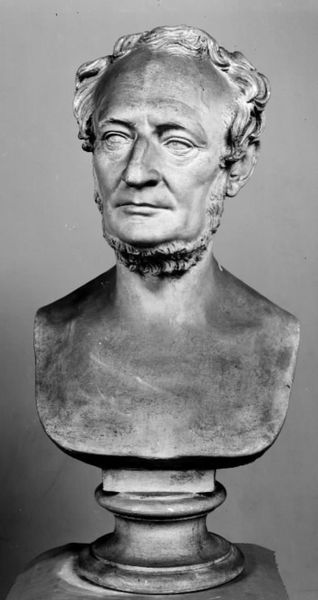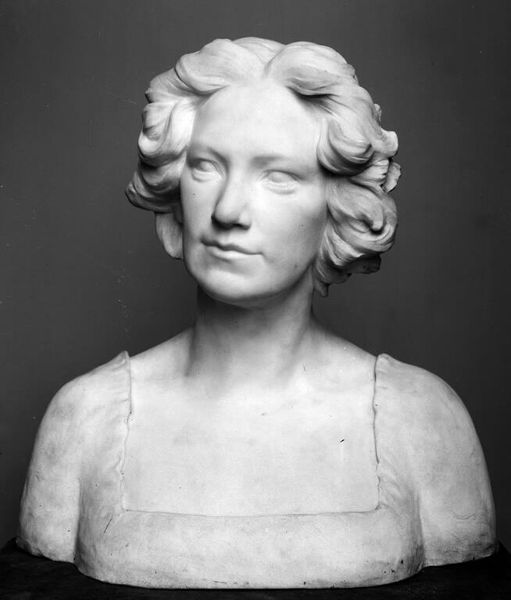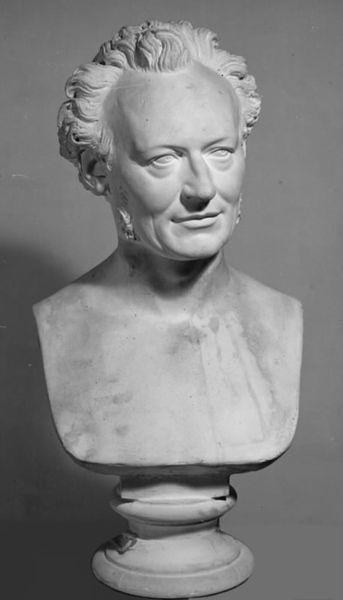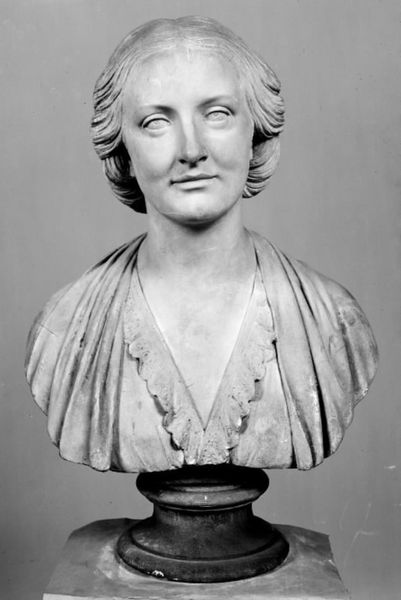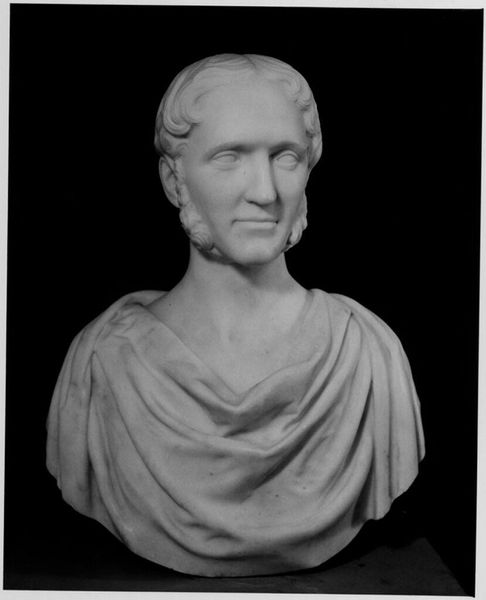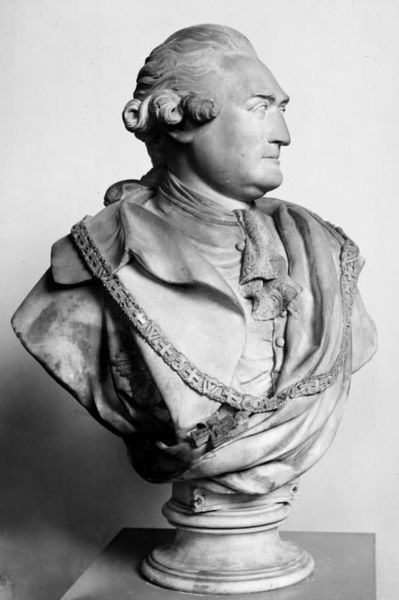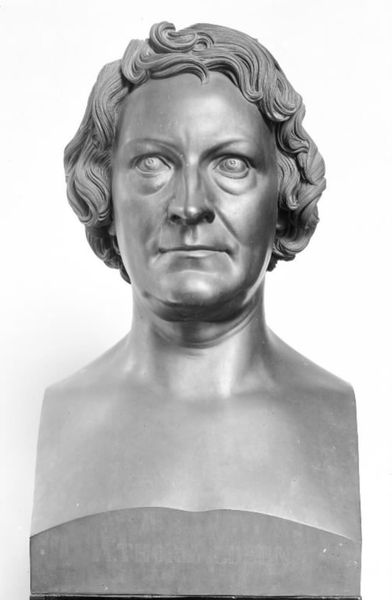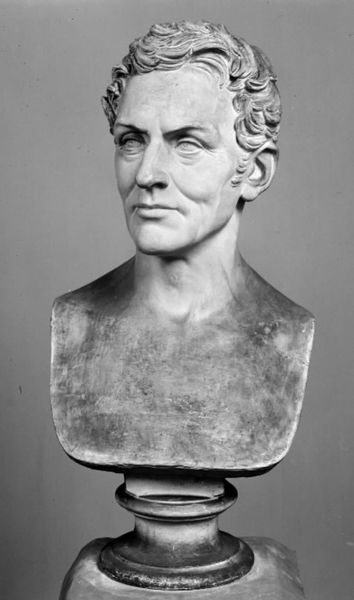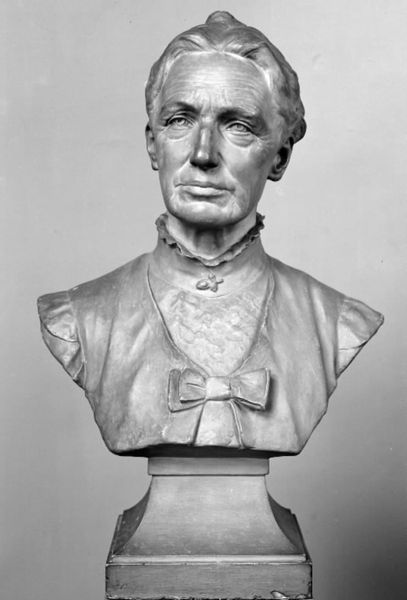
Dimensions: 54.5 cm (height) (Netto)
Editor: This is a marble bust from 1881, "Fru Flora Hellesen, f. Top," by August Saabye, currently at the SMK. The detail in the curls is really impressive, but her eyes… it’s a bit unnerving, isn’t it? What’s your take on this piece? Curator: The empty eyes, or rather, the generalized features, are crucial to understanding how portraiture functioned socially at the time. It wasn't simply about capturing a likeness, but also about conveying a certain social standing and conforming to the prevailing Neoclassical aesthetic. Editor: So, less about the individual and more about the ideal? Curator: Precisely. This bust would have been commissioned and displayed to reinforce status and connections. The meticulous rendering of fabric and hair signaled wealth and refinement. Consider who commissioned such a work, and for what spaces it was intended. These details become critical for any viewer encountering this work. It prompts a consideration of whose stories get told in the history of art. Editor: So, who "Fru Flora Hellesen, f. Top" was matters much less than the message this sculpture sends about Danish society at that time? Curator: To some extent. But recovering information about her, the commissioner, the placement of the piece – all contribute to a fuller understanding of its cultural impact. Think about the public role of art: How did works like this shape societal values and power structures? Editor: It's interesting how a portrait can be so much more than just a person. Curator: Indeed. This sculpture allows us a glimpse into the power dynamics and cultural values embedded in 19th-century Danish society. Editor: I’ll definitely think about art differently now! Curator: Excellent, it’s always about the interplay between the work, the society, and the stories we tell.
Comments
No comments
Be the first to comment and join the conversation on the ultimate creative platform.
